EXT Era
Mounted To: Privateer 161, Zerode Katipo, and Forbidden Dreadnought
Reviewers:
- David Golay: 6′ / 183 cm, 165 lb / 74.8kg
- Xan Marshland: 5’10” / 178 cm, 145 lb / 65.8 kg
Test Duration:
- David: 3.5 months
- Xan: 5.5 months
Test Locations: Western Washington; Hood River and Oakridge, Oregon; Fruita, Colorado; Utah, and others
Travel Options: 140 – 170 mm
Wheel Size: 29’’
Offset: 44 mm
Stanchions: 36 mm
Stated Weight (170 mm): 2280 g
Blister’s Measured Weight (170 mm, uncut steerer tube): 2271 g
MSRP: $1950
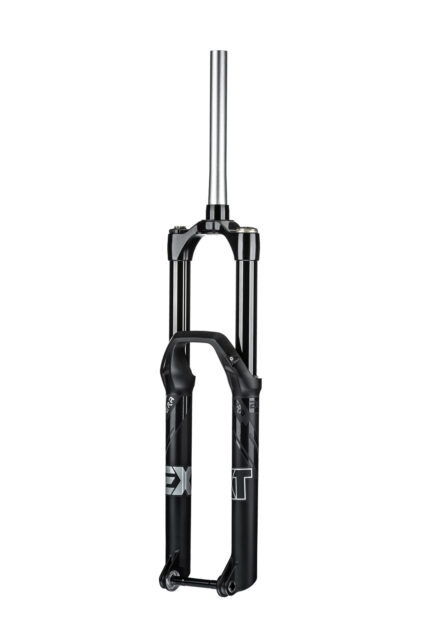
Intro
EXT has been making waves in the MTB world with their rear shocks for a few years, and now their first fork is here. I loved their Storia rear shock when I tested it last year, and I’ve now also been spending time on the Era. EXT’s track record (and the fork’s lofty price tag) give the Era a lot to live up to, but after 3.5 months of testing, I’ve come away impressed. And Xan Marshland has been spending a lot of time on the Era too, and now we’ve updated the review to include his thoughts.
Design
The features of the Era might seem fairly conventional at first blush, but things get really interesting once you dig in. It’s a single-crown fork with adjustable rebound, high- and low-speed compression, and an air spring. It’s only available in a size for 29’’ wheels with 44 mm of offset, a 15 x 110 mm Boost front axle, and with Torque Cap compatibility. The stanchions are 36 mm in diameter, and there’s a post mount brake for a 180 mm rotor. So far, so normal.
There are some interesting touches in the chassis, though, most notably the crown. The Era uses what is effectively a standard 1.125 –1.5’’ steerer tube (at least as far as headset / frame compatibility goes) but unlike any other fork I can think of, the lower portion of the steerer tube itself is only 1.25’’ in diameter where it meets the crown. Instead of having the crown race press onto the steerer tube, the crown extends much farther upward than on most forks, and the crown race presses onto the crown itself.
This means that there’s much more overlap between the crown and steerer tube than on most forks. That interface is ~48 mm (1.89’’) tall, compared to about 20–27 mm (0.79–1.06’’) on most single-crown forks. EXT touts that extra-long interface as substantially improving stiffness, and while it stands to reason that it should help with fore-aft stiffness in particular, it also seems like it could help stave off the dreaded CSU creak as well.
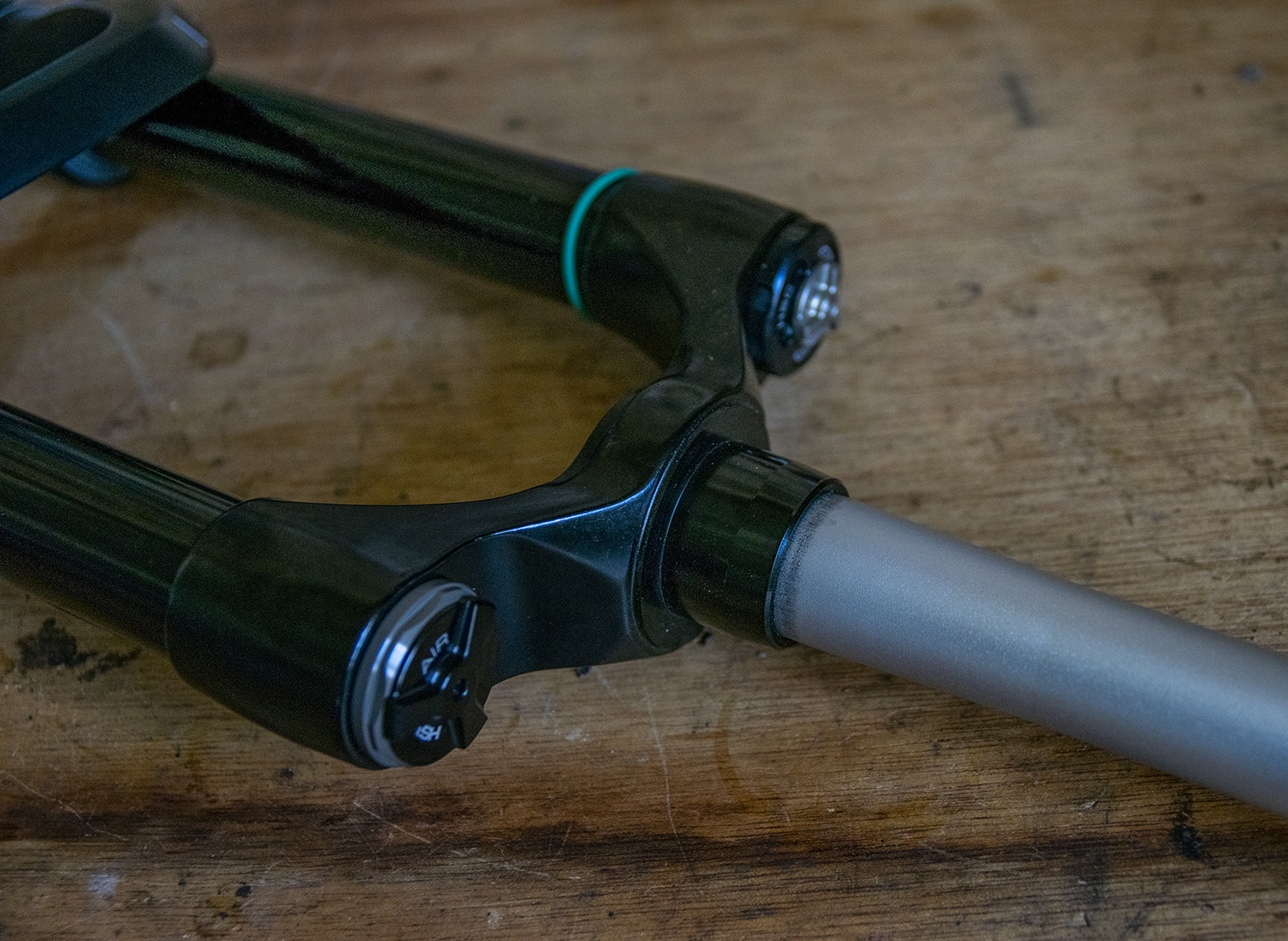
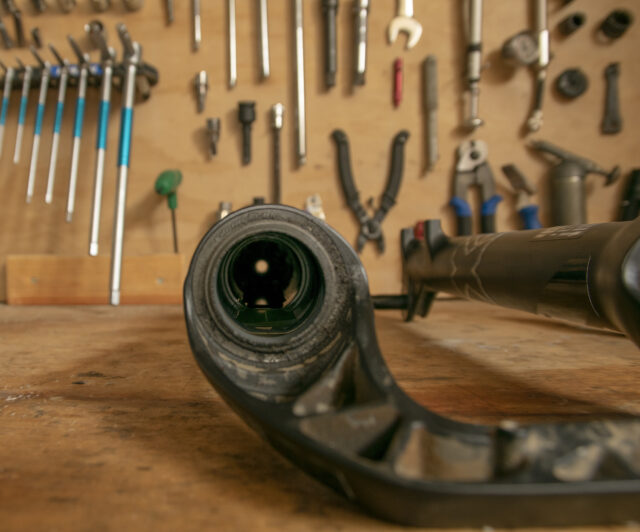
The argument for slotted bushings is that they allow oil to flow past the bushings for lubrication; the argument against them is that they can accelerate bushing and stanchion wear, due to the higher contact stresses at the edges of the slots. Fox in particular struggled with this in some of their early forks, and while the major manufacturers have mostly figured out how to mitigate the issue, the solid bushings in the Era are probably still a good call from a durability standpoint.
Air Spring
Things get a lot more interesting — and complicated — when you dig into the Era’s air spring. Like the Manitou Mezzer Pro and Öhlins RXF 36 m.2 Air, the Era uses an air spring with two positive chambers, one stacked on top of the other — EXT calls it “HS3.” Both are filled at the top of the fork (in contrast to the Mezzer and RXF36, both of which place one of the air valves at the bottom of the fork leg). The Era’s main positive chamber (labeled “+”) works like the main chamber in a conventional air-sprung fork. The second chamber (“++”) sits on top of the + chamber and is separated from it by a floating piston, on a shaft that limits how deep it can sit in the stanchion.
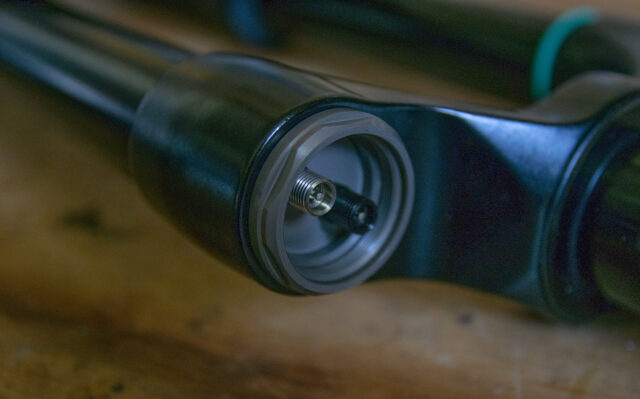
The ++ chamber runs substantially higher pressure than the + one, with the ++ chamber only coming into play once the fork has compressed enough that the + chamber’s pressure reaches that of the ++. At that point, the piston separating the two begins to slide upward in the stanchion, and both chambers compress in unison, effectively acting as one higher-volume chamber.
The idea is to have the spring ramp up substantially through the midstroke, before the ++ chamber comes into play, without continuing to ramp up as aggressively deep in the stroke. This system is meant to greatly improve midstroke support without making the fork so stiff as to be unable to use full travel, as well as providing an extra degree of tunability for the rider. The greater the difference between the + and ++ pressures, the deeper in the travel the ++ chamber comes into play, and the fork ramps up more aggressively for more of the midstroke. Conversely, a smaller pressure difference mitigates the effect. EXT has a pair of graphs in the owner’s manual which lay out the relationship between the two pressures, and can be seen below:
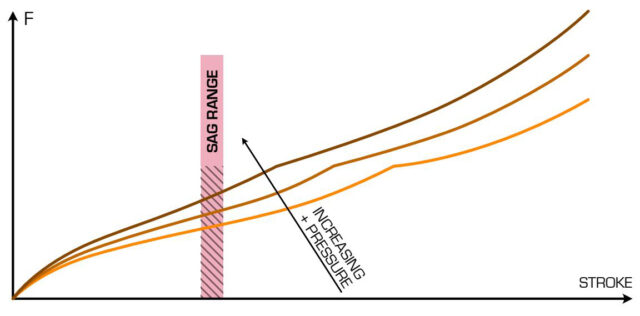
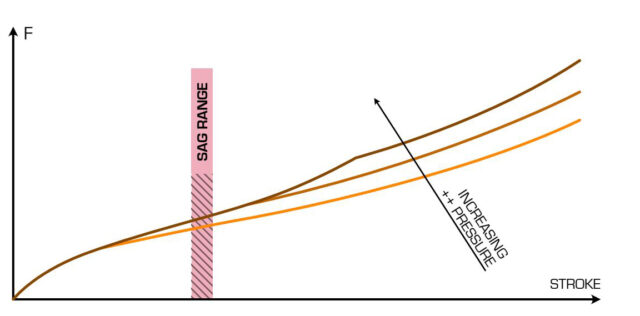
That’s all very similar to the Mezzer Pro and RXF36 designs, albeit with a slightly different layout, but then the HS3 spring adds a third positive spring to the mix. In addition to the two air spring chambers described above, there’s also a small coil spring, also placed in series with the two air springs. Its goal is to improve small-bump sensitivity by allowing a small amount of compression before the air spring seals break free and start sliding. Basically, the coil spring has a very short stroke and is only in play for a short amount of travel, before it bottoms out and the air spring takes over. That little bit of coil-sprung travel is enough to apply some force to the air spring and get it to break the seals free and start moving, but not much more. EXT only offers a single spring rate for the coil spring, but they feel that it’s in play for so little of the stroke for that to be acceptable.
Finally, there’s an automatically-equalizing air negative spring, like you’d find in most modern air forks. Instead of using a dimple in the stanchion for pressure equalization, though, the Era relies on a small valve in the air piston that is opened by contact with the topout bumper. Because the Era uses that valve for negative-pressure equalization, there’s no need to swap air shafts to change the travel — it’s accomplished simply by adding or removing spacers. Unfortunately, doing so requires a proprietary tool to remove the air spring assembly from the stanchion and isn’t meant to be an at-home job, but it can easily be done as part of a routine service if desired.
[If a refresher on what a negative spring is and how it works would be helpful, check out the “Design” section of our Vorsprung Secus review, which covers the concept in detail. The more common design is to use a small dimple machined into the inside of the stanchion, which allows air to bypass the piston at or near topout, to equalize pressure between the positive and negative chambers. As soon as the fork compresses slightly and moves the piston past the dimple, the piston seals fully against the inside of the stanchion and pressure is no longer equalized between the two chambers.]
The design of the Era does mean that the air piston seal doesn’t need to slide over the edge of the stanchion dimple each time the fork is compressed which theoretically could help with seal durability, though we haven’t generally found that to be much of an issue in other forks. The negative spring in the Era is also notably large; see the comparison to the spring shaft from a RockShox Pike, below:
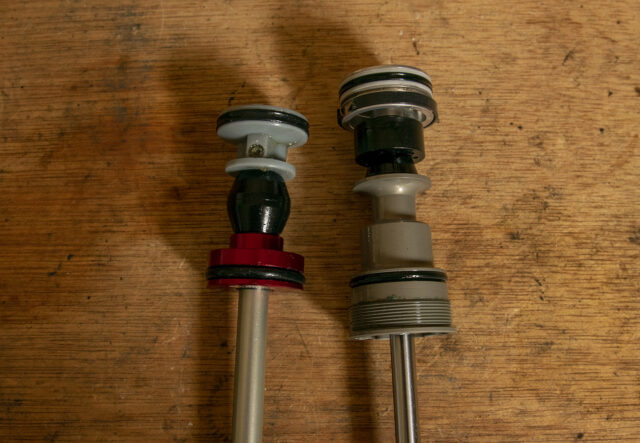
It’s also worth noting that the Era’s spring just features a lot more parts than most other forks. In addition to the complexity inherent in the HS3 system, EXT has gone to great lengths to mitigate every bit of friction they can, especially when the fork is flexed and binding. Look again at the image above, comparing the Era main piston to that of the Pike. The latter simply uses a quad-ring seal in a gland on a molded plastic piston. The Era adds a pair of Delrin retaining rings on either side of the quad ring to better hold it in place, and adds a glide ring below. The same is true of the secondary piston separating the + and ++ chambers, except that one uses two glide rings. All of that adds up, and goes a long way toward explaining the price of the Era. As Vorsprung’s Steve Mathews talked about on Episode 60 of Bikes & Big Ideas, keeping part counts down is a key consideration for keeping costs in check for the major OEM suspension manufacturers; without such tight cost constraints, a designer can do a lot more to try to eke incremental performance gains out of a fork.
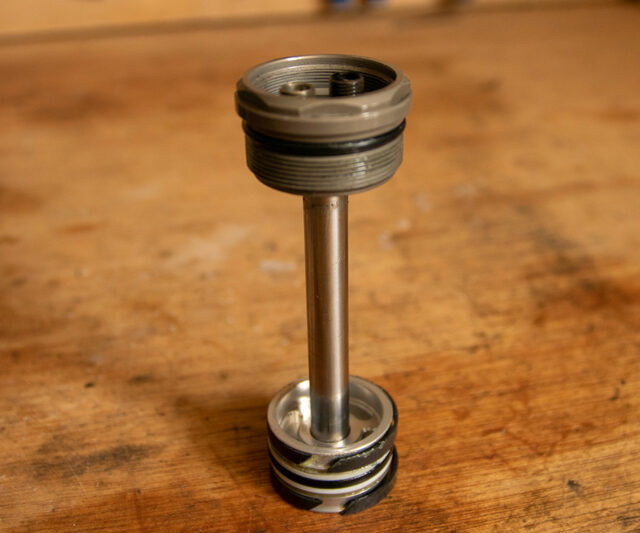
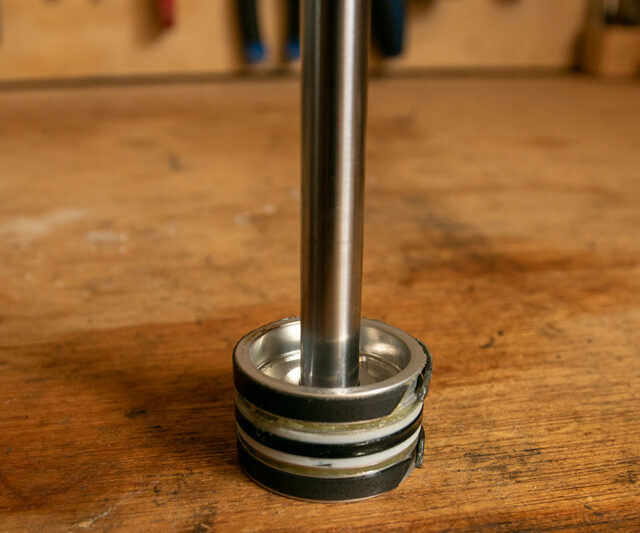
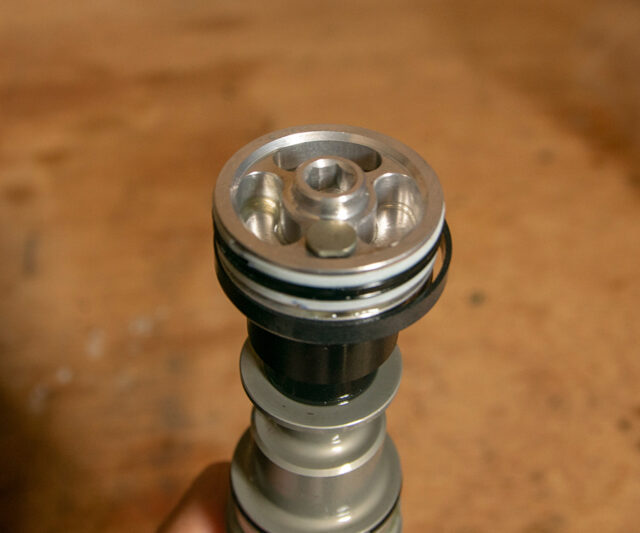
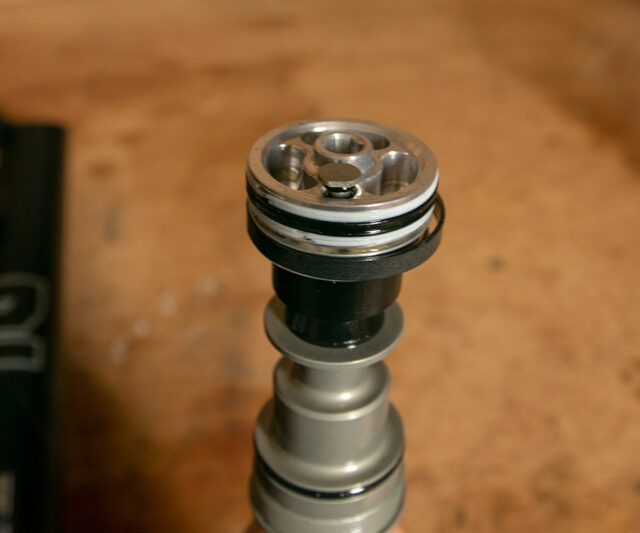
Of course, being more complex and more expensive doesn’t necessarily mean a fork actually works better. But the added complexity does mean that the Era is legitimately more expensive to produce than a simpler design would be, and as we’ll get into below, does have some tangible benefits on the trail.
Damper
In terms of adjustments, the damper in the Era features adjustable low- and high-speed compression, and adjustable rebound. The ERA damper uses a spring-backed IFP for oil-volume compensation. While the overall layout is fairly conventional, EXT has some tricks up their sleeve here, too. The damper shaft uses what EXT calls a “floating shaft guide,” meant to — you guessed it — reduce friction and binding when the fork is flexed and introduces side loads on the damper. And as with the air spring, the IFP piston uses an additional glide ring to help keep things from binding when the fork is flexed and the various sliding parts are experiencing significant side loads.
EXT also touts the high oil volume and flow of the damper, and the 22 mm main piston is indeed notably large. A secondary compression piston (EXT calls it “High Dynamic Response Valve”, or HDRV for short) separates mid- and high-speed compression damping, and is even larger at 24 mm diameter. There’s nothing super unusual about the overall layout, but EXT says they’ve gone to great lengths to minimize friction and maximize consistency, and the result is a very high-performance unit, as we’ll get into more below.
On The Trail
I’ve spent a lot of time on the Era, set to 170 mm of travel, on both the Privateer 161 and Forbidden Dreadnought. I’ve also used it on a handful of rides with it dropped to 140 mm on an upcoming bike that we’re not allowed to talk about yet. You’ll just need to stay tuned for that one. The design of the Era is certainly impressive, but can it live up to its eye-watering price tag?
To be honest, going into the review I was a bit skeptical. I was hugely impressed by EXT’s Storia rear shock when I tested it last year (enough so that I just bought one for my next personal bike build — more things to stay tuned for!). But as I noted in that review, the Storia is in the same ballpark, price-wise, as most of its competitors. The Era kind of isn’t. I didn’t doubt that it might be very, very good, but almost twice as good as a Manitou Mezzer Pro? A whole $700 better than an Öhlins RXF36 m.2? That’s a tall order.
The Era just might pull it off though — at least for the right well-heeled rider who’s willing to spend for some incremental but very real gains in performance. So let’s tease this apart, and see where the Era really shines.
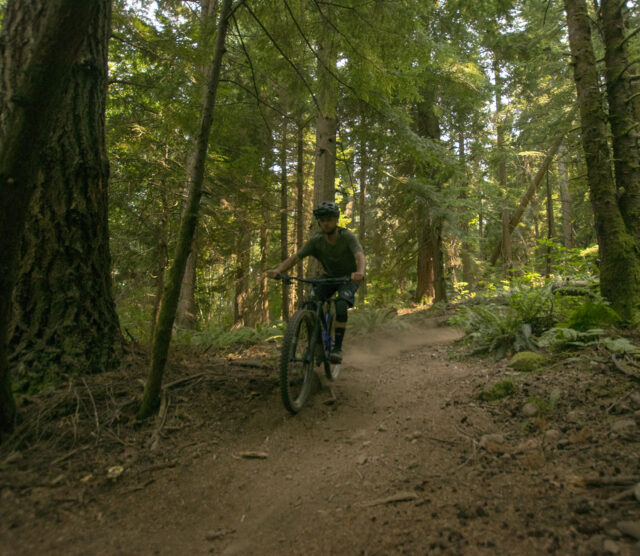
Support vs. Sensitivity
Particularly for air-sprung forks, small-bump sensitivity and midstroke support tend to be at odds with each other to a significant extent. The Manitou Mezzer Pro was my first foray into a dual-positive chamber air spring design, and it blew my mind when it came to midstroke support, but small-bump sensitivity isn’t its strong suit. Conversely, the RockShox ZEB Ultimate just might be the most ground-huggingly-sensitive air-sprung single crown that I’ve ridden, but its midstroke support is rather lacking for my taste. Coil forks tend to fare better than air-sprung ones when it comes to this particular tradeoff, but pay for that with added weight and reduced tunability (and are something of a rarity in today’s market). The Era’s HS3 spring system just might be the best combination of all these traits that I’ve ridden.
As with any fork, how you set it up matters a whole lot, too. You can make any fork super supportive by simply adding air pressure / running a stiffer spring, but it’ll come at the expense of making the fork more harsh, and likely unable to use anything close to full travel. Running a fork softer will improve sensitivity, but reduce support and possibly lead to frequent harsh bottom-out events. And so when I’m comparing different forks here, I’m talking about how well you can set them up to emphasize a certain trait without dramatically impacting their performance elsewhere.
Depending on how you set it up, the Era can have anywhere from outstanding sensitivity with decent support, to solid sensitivity with excellent support. The combination of both traits that is possible with the Era is up there with the Vorsprung Secus-equipped Fox 38; the only stock fork that we’ve discussed here that comes all that close is the Öhlins RXF36 m.2. If you care a whole lot about support and are willing to give up some small-bump sensitivity to save a bunch of money, the Manitou Mezzer Pro is still outstanding. The Öhlins splits the difference between the Mezzer and the Era (both in terms of price and sensitivity) while also offering excellent support.
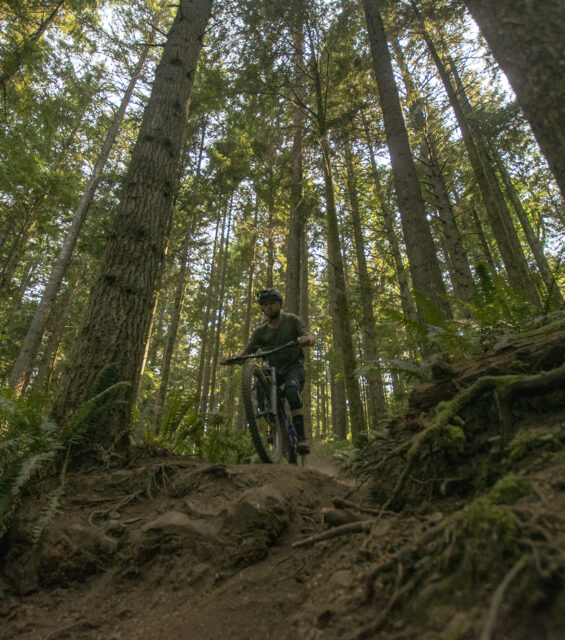
Xan: Fully agree with David here – it’s really that combination of midstroke support and sensitivity that makes the Era stand out. On one of my early rides on the Era, I put the sag ring all the way down and rode a fast section of trail littered with braking bumps. I was amazed to discover that I’d used less than 30 mm of travel, despite riding the front of the bike hard through this chattery section. Granted, I haven’t spent any time on the Öhlins RXF RXF36 m.2 Air, but never before had I been on a fork that used so little travel, while simultaneously erasing any transmission of impacts to my hands. The Era simply makes better use of the beginning of its stroke better than anything else I’ve ridden to date.
So how does this support/sensitivity combo translate to everyday riding situations? In corners, traction is ample, and the fork does an excellent job of staying high in its travel, which better preserves the bike’s geometry. On steep, fall line trails, where excessive brake dive can pitch you over the front and steepen your head tube angle, this advantage is magnified.
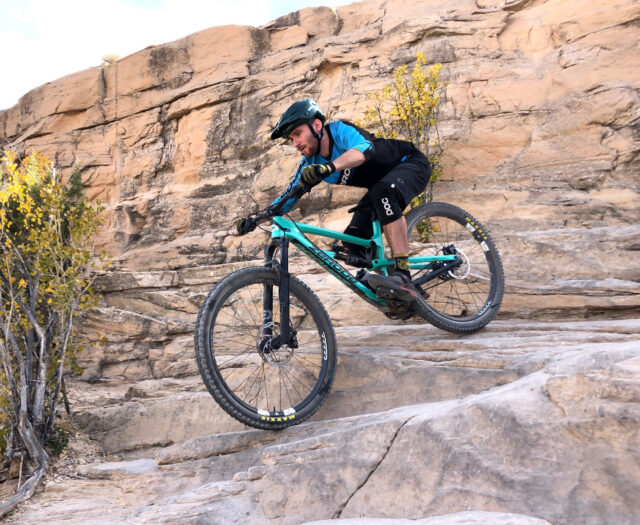
David: One limitation I did run into with the Era, when running it at 170 mm travel and tuning for an especially supportive setup, was that I wasn’t quite getting full travel out of it. With a bit of extra pressure in the ++ chamber and in that long-travel configuration, the fork was just a little too progressive to regularly use the last ~15 mm of travel. I didn’t find this to be the case with the fork set to 140 mm of travel, which isn’t hugely surprising. The longer the travel a given air-sprung fork is set to, the more progressive it becomes due to the greater difference in beginning and end stroke air-chamber volume, and the Era is no exception. Dialing back the ++ chamber pressure made it possible to use full travel, but also somewhat reduced the amount of midstroke support on offer. I’m generally of the opinion that using every millimeter of travel isn’t a terribly important criteria, and I’m fine leaving a little on the table to achieve the performance I’m looking for in other areas, but it’s still worth pointing out.
EXT’s recommended air pressure chart offered a good baseline for me with the fork set to 170 mm of travel, but I needed to go with substantially higher pressure in both chambers with it lowered to 140 mm. As with the other dual-positive chamber forks I’ve ridden (the Manitou Mezzer Pro and Öhlins RXF36 m.2 Air), it’s critical to adjust both chambers in concert with each other when changing air pressures. The relative pressure between the two has a huge impact on the fork’s performance. With the Era, it’s also important to inflate the ++ chamber first — if you start with the + chamber, the piston separating it from the ++ one will be pushed higher in the fork, and then back down once you inflate the ++ one. At a minimum this will change the + chamber pressure setting; the piston may also not return to its original position, messing with the relative volume of the + and ++ chambers.
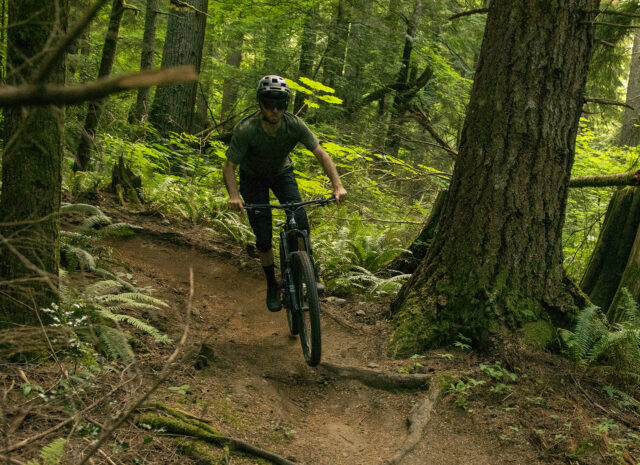
Xan: One other note on the air spring – the opportunity to ditch volume reducers once and for all is awesome. I found myself playing around with the progressivity of the fork day in, day out at various trailheads in a way that just isn’t practical with token-equipped forks from Rockshox, Fox, and others. I really like the idea of a highly engineered product that can still be approachable and user friendly relative to its competition, and EXT definitely hits the mark in this area.
Damper Performance and Setup
David: Setting up the Era damper was straightforward, and it’s performed extremely well in my time on it. Like most high-end forks (Fox’s Grip2 damper-equipped models excepted) there are separate high and low-speed compression adjusters, and a single rebound adjustment. Once again, EXT’s baseline settings (HSC and LSC 9–10 clicks from closed; rebound 11 clicks in) were a reasonable starting point for me with the fork at 170 mm travel, though I ended up mostly running slightly more HSC and a touch less LSC than suggested. With the fork at 140 mm, I needed to run substantially more rebound damping to reign in the higher spring pressures I also needed.
As with testing any new suspension product, I started from a recommended baseline setting and then experimented with a range of settings to bracket my setup and get a feel for the range of adjustment on offer. The Era’s damper has an impressively wide range of adjustment and does an uncommonly good job of avoiding feeling harsh or spiky when running the high-speed compression adjuster, in particular, at a relatively firm setting. I’d also commend Fox’s latest Grip2 w/ VVC damper, as found in some versions of the 34, 36, 38, and 40 for the same reasons. But as Noah Bodman and I noted in our reviews of the 38 and 40, it doesn’t feel like it has an especially large amount of high-speed compression damping, even with the adjusters at or near their fully closed positions. The Era is able to achieve much firmer compression settings if desired, but there’s also a notably wide range of adjustment. Unlike the Öhlins RXF36, for example, I don’t think there are going to be too many very light and / or less aggressive riders who need a much lighter compression tune than the Era comes with.
Xan: Yep, there’s certainly a wide range of damper adjustment on tap here. I found myself in a similar boat to David, starting with EXT’s recommended 8 clicks from closed for both HSC and LSC, and eventually landing on a little more HSC (7 clicks from closed) and less LSC (11 clicks from closed). And despite this adjustability, I’d still say that it’s fairly hard to set the Era up to feel completely awful, provided you’re in the right air pressure ballpark and you haven’t cranked the compression all the way closed. Relative to other highly adjustable suspension products on the market – particularly Cane Creek’s – you can likely jump on the Era without really knowing what you’re doing and still land on a usable setup with little trouble. So much like my comments on the air spring above, I think EXT is doing a good job when it comes to making a very adjustable, yet approachable fork
David: If I have to quibble, the low-speed compression adjustment knob on Era does lack some definition in its detents, and it can be a little hard to tell exactly how many clicks you’ve gone through. Overall though, the damper in the Era has just proven to work well, with a broad range of adjustments and very good consistency, even on some long, punishing, high-speed descents.
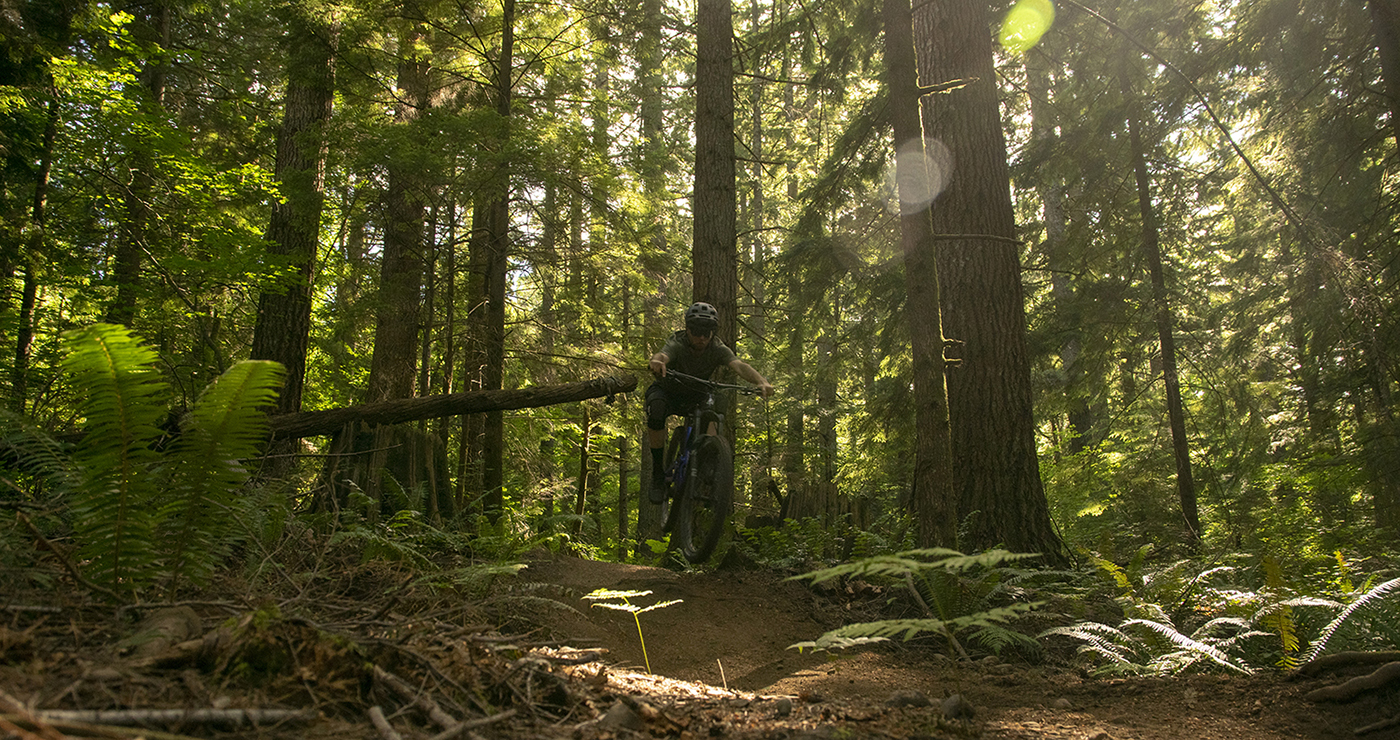
Chassis and Stiffness
There are two main ways that a stiff fork chassis is potentially beneficial. First, a stiffer fork simply steers more precisely. It’s particularly apparent when you’re trying to hold a line on an off-camber side hill, or smashing through something really rough. It’s also the sort of sensation that can be hard to detect until you get on something stiffer, and realize what you were missing before. On that front, the Era is perfectly respectable, but not outstanding. The RockShox ZEB, Fox 38, and Manitou Mezzer Pro are all significantly more precise than the Era. The Era is a touch stiffer than the Öhlins RXF36, and while I don’t have a RockShox Lyrik on hand to directly A–B it against right now, based on triangulating the Era–Lyrik comparison against the other forks in the class, it’s tough to pick a clear winner — they’re right in the same ballpark.
The second advantage of a stiffer fork, though, is that it’s a lot less prone to binding up and not sliding properly when it is being heavily loaded. And on that front, the Era is really excellent. The steps that EXT have taken to minimize friction and reduce binding really have paid off, and it’s very hard to get the Era to feel like it’s hanging up and binding when it’s both absorbing an impact and also heavily loaded in a different direction (e.g., while braking hard on a very steep section of trail). To be clear, I think the Era is pulling this off due to all the refinements that have gone into its internals, not by literally being super stiff. You can make a fork not bind up by simply being so stiff that it’s not flexing much, or by accepting some flex and taking steps to work around it, and it definitely feels like EXT has done more of the latter. The results are still impressive though — particularly for heavier and / or more aggressive riders who frequently ride very steep trails and are consequently introducing a lot of fore-aft loading into their fork.
After 3.5 months of testing, the Era has also performed faultlessly from a durability perspective. It’s still running smoothly, there have been no signs of creaking or wear, and its performance is every bit as consistent as when it was new. We’ve unfortunately had to send the Era back to EXT and won’t be able to comment on super long-term durability, so the best I can say is “so far, so good.”
Xan: I managed to get my hands on one of the first Eras to hit the States late last season, and as a result, have spent about 5.5 months on the fork. I haven’t had a single issue with the Era either. A handful of months isn’t quite enough time to designate this a long term review, so take these data points with a grain of salt.
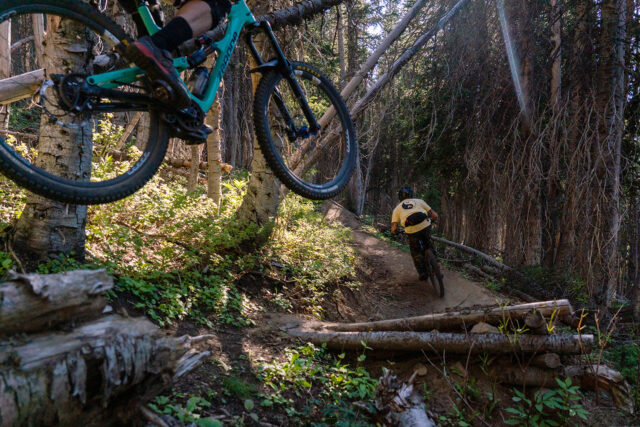
Bottom Line
David: The EXT Era is an undeniably expensive fork, but it does offer some real, compelling performance advantages compared to its competitors — particularly for people who are really interested in achieving a whole lot of midstroke support while also maintaining very good small-bump sensitivity.
It’s not so astronomically better as to ruin other forks for me, but as Dylan Wood and I discussed on Episode 77 of Bikes & Big Ideas, that’s really not how upgrades work at the top end of the price spectrum. An $8,000 bike isn’t twice as fun to ride as a $4,000 one, but if you’re willing to spend the extra money, there are very real performance gains to be had — they just become increasingly subtle. A fork that retails for almost $2,000 won’t be for everyone, but the Era does have some real performance advantages over its competition, and for the rider who’s willing and able to spend to get the very best, it really is outstanding.
Trail / Enduro Fork Comparisons
We’ve been testing eight single-crown forks from Fox, RockShox, EXT, Manitou, Öhlins, & Marzocchi, and you can check out our Trail / Enduro Fork Comparison article for more detailed comparisons between them all.

Great review! Your look at the internals is outstanding and well warranted, given how curious everyone is to understand how this is different from conventional forks like the 38/Zeb.
If you had to pick between a Secus 38 and the ext era which would you pick? Performance wise is it too close too call? Any noticeable pros/cons?
Also I have to say the quality and thoroughness of the suspension and tire reviews are outstanding. Seriously its a step above almost all the other mtb publications.
Thanks for the kind words!
In short the Secus’ed 38 is notably stiffer, quite a bit heavier, and a little easier to set up than the Era, especially on the spring side. And while I think the newer VVC Grip2 damper is going to work really well for a lot of people, I also think that there are going to be a number of heavier and/or more aggressive riders who are going to find that it just doesn’t have enough high speed compression damping for their liking without some custom tuning. For those people, the Era damper is going to work better out of the box. It’s not a big margin at all, but the Era also probably has a slight advantage when it comes to small bump sensitivity.
can you reduce the travel ourselves or does it have to be sent it for the service?
Removing the air spring assembly from the stanchion requires a custom tool that EXT doesn’t currently plan to sell to consumers, so unfortunately it’s not a DIY job. Lower leg services can be done at home.